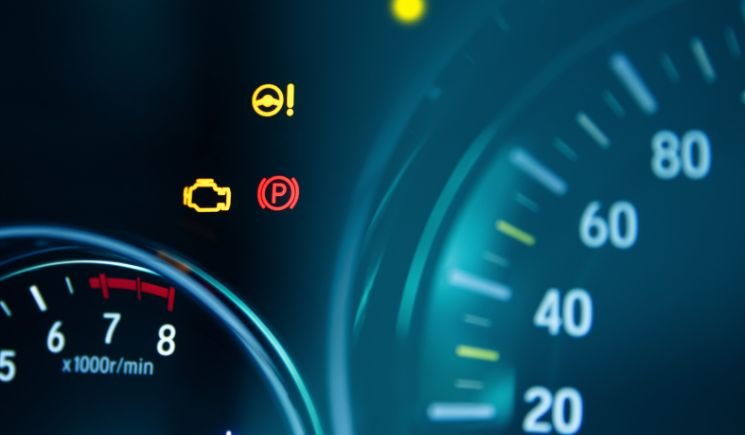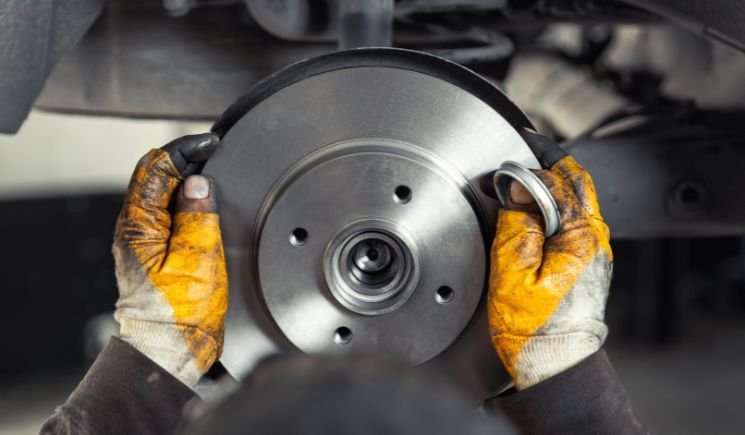Forward Emergency Braking System Nissan Collision Warning Light Flashing: Nissan Owners Beware

The forward emergency braking system in Nissan vehicles is an important safety feature that is available to help avoid or mitigate front-end collisions. However, many Nissan owners have experienced issues with the system, specifically a flashing collision warning light that indicates a malfunction. This warning light can be frustrating and concerning by leaving drivers unsure whether their emergency braking system is still functional.
In this article, we’ll explore the common causes of the flashing collision warning light in Nissan vehicles equipped with forward emergency braking. We’ll provide tips for diagnosing the issue and getting the system repaired to restore the normal operations. Ignoring the warning light could mean reduced protection in the event of a potential front-end collision.
We’ll share some advices that are directly from the Nissan on what to do when you see the dreaded flashing light so you can get back on the road with confidence in your vehicle’s safety system.
So, read on to learn more and get those answers to your questions about Nissan’s forward emergency braking system.
Table of Contents
Common Causes of the Flashing Collision Warning Light in Nissan Vehicles with Forward Emergency Braking
Faulty radar sensor
- The radar sensor behind the front grille is critical for detecting potential collisions and triggering emergency braking.
- Dust, dirt, snow or ice buildup on the sensor can obstruct its view and cause malfunctions.
- The sensor may also fail due to age/wear and tear or damage from impacts.
Camera obstruction
- Nissan’s emergency braking relies on the front camera behind the windshield in addition to the radar.
- A dirty camera lens, windshield cracks/chips in the camera’s field of view, or obstructions like stickers on the windshield can disrupt the system.
Wheel alignment issues
- Improper wheel alignment causes variability in steering angle data sent to the forward emergency braking system.
- This confuses the computer and triggers the flashing collision light.
Software glitches
- The complex software controlling the braking system is susceptible to bugs causing intermittent faults.
Low battery voltage
- Consistent electrical power is critical for proper operation of the numerous sensors and computers that enable emergency braking.
- A weak battery, failing alternator, and electrical faults can cause warning light activation.
Disconnected sensors
- Collisions or extensive repair work under the hood risks accidentally disconnecting the wiring for the radar, camera, wheel speed sensors, etc.
Tips for Diagnosing and Repairing the Nissan’s Forward Emergency Braking System When the Collision Warning Light is Flashing
- Carefully inspect the front radar sensor behind the grille for obstructions like dirt, snow, ice, etc. Use a soft cleaning cloth to gently clean the sensor surface without damaging it. Be sure to calibrate the sensor afterwards.
- Examine the windshield in front of the camera for cracks, chips, and sticky obstructions. Have any glass damage in the camera’s field of view repaired by a professional to prevent interferences.
- Test drive the vehicle and see if the light activates when approaching objects, braking, turning, or hitting bumps. This can helps to narrow down the potential causes that are related to wheels, sensors, or electrical faults.
- Have a dealership or shop with factory scan tools to hook up the vehicle’s computer to check for diagnostic trouble codes that may point to specific sensor or computer failures.
- Request a dealership to perform all the software updates to eliminate any known glitches. Be sure to test drive after having the necessary repairs.
- Inspect all emergency braking system wiring harnesses and connectors for signs of damage or disconnected plugs.
- Check that the battery terminal connections are secure with no corrosion. Load test the battery to confirm the sufficient voltage and have the alternator tested for issues.
- Discuss about repainting the front bumper or possible sensor damage from minor collisions that may be distorting radar signals. Sensor replacement may be ideal in this condition.
- Suppose that the all units fails to identify the reason for activation. In that case, replacement of the entire emergency braking unit may be necessary to return to normal function.
Cost That You Can Expect To Pay
- If dirt/debris on the radar or camera is the cause, carefully cleaning the housing and lens surfaces may resolve it at no cost. Some dealerships don’t charge for a quick external sensor scrub as well.
- If sensors are damaged or non-functional, parts costs can be $150-$400 for the radar and $200-$600 for the camera assembly. Labour charges adds up to $200-$300 for a typical total sensor replacement and $500-$1300 at a dealership for the complete replacement.
- To realign wheels to the factory specs after steering system damage, expect alignment costs of $70-$150 at a shop. This may fix the incorrect wheel angle data that confuses the braking computer as well.
- Programming the latest software calibration to correct glitches is mostly just labour time. The update itself is under warranty. You can expect 1-2 hours of work at ~$100/hr, so $100-$200 in total.
- The battery and the alternator may need testing if the low voltage is on the run. Battery replacement can range from $150-$300. An alternator may cost $450-$850 with labor.
- If all else fails, replacing the entire braking control unit is ideal. Parts can cost from $1000-$1800. With several hours of labour for installation, total costs often reach $2500+ at dealers.
- Suppose the root cause stems from a collision or other damage. In that case, additional bodywork, sensor bracket adjustments, or wiring harness replacements may be ideal at widely varying costs.
Frequently Asked Questions About The Forward Emergency Braking System Nissan Collision Warning Light Flashing
Q: Is it safe to drive with the flashing collision warning light?
A: Nissan recommends using caution and having the vehicle serviced as soon as possible. This is because the flashing light likely indicates the reduced functionality of the emergency braking.
Q: Will the emergency braking still work if the light is on?
A: It may provide limited braking ability in a collision, but full functionality cannot be relied upon with the warning light activation.
Q: Can I fix this issue by myself?
A: It’s not advisable to attempt repairs on your own. Diagnosing and servicing the emergency braking system should be done by a Nissan-certified technician.
Q: How long does it usually take for the dealer to diagnose and repair this issue?
A: If the cause is apparent through scans and exterior inspections, it can have the fixing solutions on the same day. If extensive troubleshooting is needed, repairs may take a few days.
Q: Is there a way to turn off the flashing light while waiting for repairs?
A: Unfortunately, no, the only way to stop the warning light is to correctly diagnose and resolve the underlying issue with the braking system.






